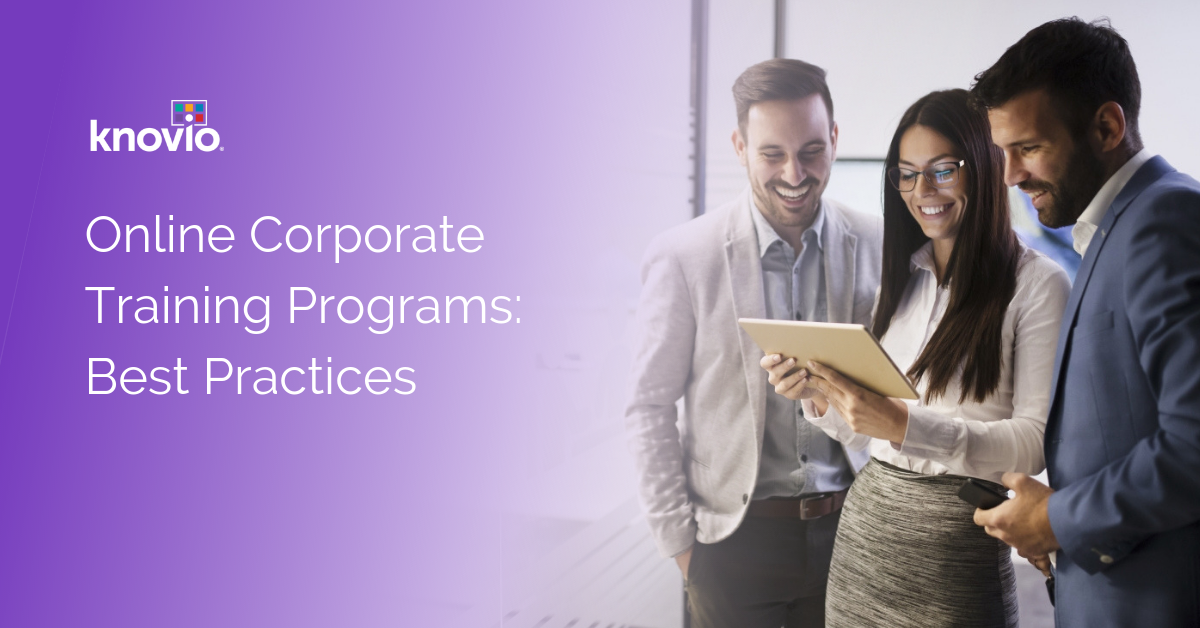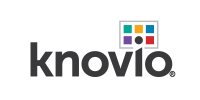Online Corporate Training Programs: Best Practices

It's no secret that continuous learning is an important part of what makes employees happy and productive, and these programs not only help the employees become more proficient at their job but gives them a sense of improvement.
This is why it's so important for producers of online training content to create material that resonates with viewers, then present it in a way that's engaging and easy to follow.
Here are 6 things that every online training program needs to be successful:
1) Create Engaging content that's easy to follow
The first and debatably most important part of creating an effective online training program is to make content that's engaging and will capture the attention of viewers. This is important because regardless of how you present the content and encourage viewer interaction, an unengaging presentation will struggle to resonate and promote knowledge retention.
There are a number of ways to go about making content that holds the attention of audience members but what a lot of professionals have started to do is combine static slide-decks with other types of multimedia content like audio, video, and animations. This can sometimes be as simple as adding audio narration to slides but may also include video content, transcripts, translation options, and speaker profiles. It's ultimately up to you on the type of content you'd like to include and usually depends on the type of programs you're developing.
2) Give your audience a sense of progress and accomplishment
Once you've created your content and arranged it in an appealing way, the next step is to make sure it's getting viewed. After all, once you spend so much time creating an informational and entertaining presentation, it's all for not if it goes un-viewed. A popular way to encourage viewership is to create a sense of accomplishment as training material is completed, providing them with encouragement along the way.
Again, you have options with how this is done. Two of the most popular methods is providing a way for viewers to track their progress through a presentation or set of content, and providing an award or certificate after completing a certain amount of material. Some professionals use both so their audience has a continuous sense of progress as they are completing material and a sense of accomplishment when done.
3) Use knowledge checks to measure information retention
So you've made the content and people are watching it, time to call it a day right? Well, even if the content is being watched, it's important to make it's getting the correct information across. After all, what good are training presentations if the audience is no better off once watching it? To make sure the audience is retaining the information, professionals have turned to knowledge checks and quizzes.
Although it may seem simple, adding a few questions along the way will not only make sure viewers are paying attention to the material, but will re-enforce specific points in the mind of the viewer. Adding a larger knowledge check at the end of a presentation will make sure that the audience is understanding the larger concepts presented and provide feedback to you on what points may need to be re-enforced in later presentations.
4) Make the learning process viewer centric
Viewers today have come to expect content to be made available in a way that's easy to access and specifically customized to them. This includes providing a centralized location where they can find all the content specific to their needs. What some professionals have done is to make all the training content they have available to every user, but this is often overwhelming and has a negative effect.
A more effective strategy is to create a learning portal for each type of user and supply only the material that's relevant to them. Doing so will provide all the material they will need to access without this overwhelming effect. Another way this idea of a personalized portal is being used to make the experience more interactive is adding the ability for viewers to favorite material, creating a custom list they can revisit later.
5) Provide a continuous supply of content
All too often professionals tend to end their online learning after getting users up to speed with their position during onboarding. They can sometimes overlook how important continuous learning is to today's employees who what to learn new skills and develop new skillsets. The ability to learn on the job is extremely important and is a major part of what employees look for when selecting a career.
By adding training presentations at a consistent rate, your audience is able to continuously improve their skill's becoming more productive in their roles. In addition, it will also help convey that you value them and their career development. To make viewers aware of new content, user alerts and notifications are a method that many professionals have taken to, often using automated emails.
6) Gain insight into viewer behavior
The final part of an effective training program is including the ability to measure how your audience is interacting with content then using this to improve future material. After spending all this time creating content it is important to understand how it is performing. There are a few ways to go about gathering this feedback depending on what type of data you'd like to access.
A traditional method is to reach out to users directly and ask for feedback on what they thought about the program and what can be improved. A second strategy is to include a quick open response area at the end of presentations asking for feedback. Another strategy that has been gaining popularity in recent years due to its ability to paint an accurate and unbiased picture of engagement is viewer analytics. Using this type of data, you're able to see what content is being watched and how engaged each user becomes, giving insight into what content is resonating most effectively.
Key Takeaways:
Creating a compelling and effective training program goes far beyond gathering and arranging the content you want to present and much of what makes it successful is how it is handled after the fact. Make sure the presentations are able to capture and hold the attention of viewers, then make the content easier to find and follow along. Keep the content coming at regular intervals then, use feedback or analytics to continuously improve on the content you're producing.
If you're looking for a way to take your current content or program and bring it to the next level, I'd like to recommend Knovio as a solution that can help with every step of the process. Instantly upload your current presentations, then record narration or use our auto-narrate/auto-translate and add video, audio, and transcripts to create a more engaging viewer experience. These presentations can then be uploaded to a Knovio Showcases where viewers can track their progress and you'll be able to access analytics around total views and engagement.
To discover how viewers can interact with your content, take a look at a Knovio Showcase or to get in touch for a personalized call around your use case, let's get in touch!
